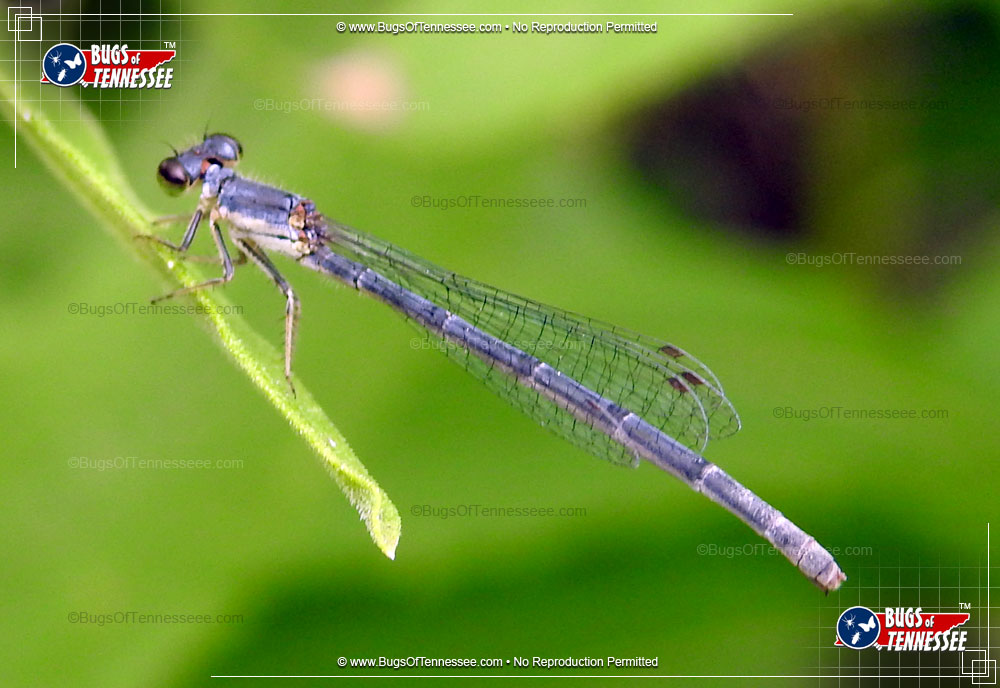Insect Order (Odonata)
ODONATA
Order Odonata covers both Dragonflies and Damselflies and encompasses around 5,500 recognized species around the globe. Just over 450 of these can be found in North America. Both are common to the state of Tennessee and can be found near water sources, skimming about the surface or flying near shorelines. The creatures are exceptional flyers with tremendous agility and an inherent ability to hover. The insects are noted for their extremely slender bodies, usually vibrant coloring, and large compound eyes.
Taxonomy
The Taxonomic Breakdown is the scientific way to categorize a partocular insect species from its largest group (Animalia) to its smallest (variable). The Genus and Species categorizations taken together make up the species' scientific name shown above, in this case Enallagma spp..
Kingdom: Animalia
Phylum: Arthropoda
Class: Insecta
Order: Odonata
Family: Coennagrionidae
Genus: Enallagma
Species: spp.
Characteristics
Outdoors: Typically found across the great outdoors.
Shiny: Has a noticeably shiny or reflective body surface.
Striped / Banded: Noticeable stripes or banding pattern.
Waterborne: Is commonnly found near water or water sources.
Description
The American Bluet Damselfly has been identified by site users by the following descriptors:
thin skinny gray grey silver black white silver shine shiny yellow brown tan striped banded bands stripes pond water outdoors
Sighting Guide
The general likelihood of encountering this insect based on a given month of the year in the state of Tennessee. Generally, the best sighting months are June through August with peak occurring in July.
Size
Below is a representation of the 'smallest-small' and 'largest-large' sizes commonly associated with the American Bluet Damselfly. Due to monitor differences, sizes may not be exact on your particular screen. Conversions to millimeters are provided for convenience.
Lowest-Low:
0.59 inches
(15 mm)
Highest-High:
1.57 inches
(40 mm)
Identifying Colors
Below you will find the colors most commonly associated with the American Bluet Damselfly. Both Primary and Secondary colors are represented in the showcase. Due to monitor differences, colors may not be exact representations.
Tennessee County Reach
The American Bluet Damselfly can be found in the following Tennessee counties:
Anderson; Bedford; Benton; Bledsoe; Blount; Bradley; Campbell; Cannon; Carroll; Carter; Cheatham; Chester; Claiborne; Clay; Cocke; Coffee; Crockett; Cumberland; Davidson; De Kalb; Decatur; Dickson; Dyer; Fayette; Fentress; Franklin; Gibson; Giles; Grainger; Greene; Grundy; Hamblen; Hamilton; Hancock; Hardeman; Hardin; Hawkins; Haywood; Henderson; Henry; Hickman; Houston; Humphreys; Jackson; Jefferson; Johnson; Knox; Lake; Lauderdale; Lawrence; Lewis; Lincoln; Loudon; Macon; Madison; Marion; Marshall; Maury; McMinn; McNairy; Meigs; Monroe; Montgomery; Moore; Morgan; Obion; Overton; Perry; Pickett; Polk; Putnam; Rhea; Roane; Robertson; Rutherford; Scott; Sequatchie; Sevier; Shelby; Smith; Stewart; Sullivan; Sumner; Tipton; Trousdale; Unicoi; Union; Van Buren; Warren; Washington; Wayne; Weakley; White; Williamson; Wilson
American Bluet Damselfly Picture (1)
1 of 1

Image of an adult American Bluet Damselfly insect.; Credit: Cade S. of Ohio.
This image is original to
www.InsectIdentification.org; Used with Permission.
